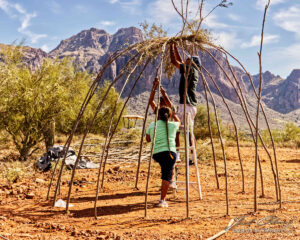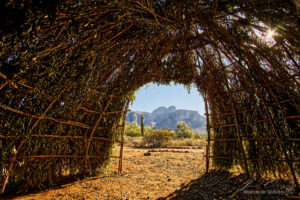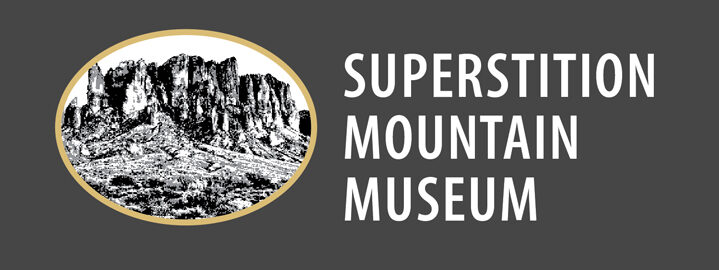By Ken Duncan, Sr.
As winter brought snow to their traditional villages in the high pine-forested mountains, the Apache migrated to the low deserts and built temporary winter villages. In this arid place, they adapted and harvested nature’s gifts of food, shelter, medicine and weapons.
 Here, against the Superstition Mountains, at the westernmost point of all Apache territory, sits the Superstition Mountain Museum’s Apache village.
Here, against the Superstition Mountains, at the westernmost point of all Apache territory, sits the Superstition Mountain Museum’s Apache village.
To the Apache people, we call this mountain “Tseh’-Hos-keet” (Rocky Outcropping). It is one of our sacred mountains where our guardians, the 4 Mountain Spirits, dwell.
The Indeh’ (The People)–what Apaches call themselves–have long protected this holy mountain. It is to be respected and left undisturbed.
The brush structures, that some call Wickiups, our people call “Gowah” (our home), and are made from two types of willow; Red Willow for the frame and Goodden’s Willow for the thatching. Yucca rope is used to tie the home together.
Elk hide traditionally covered the top of the homes but here, tarp is utilized because this display is a permanent structure. The actual village would have been used only in the winter months.
 All Apache dwellings located their doorway to the east to welcome every sunrise. The entrances were made just low enough to have all who enter bow before entrance. Then as they left, they had to bow to nature and give respect to the Creator’s work.
All Apache dwellings located their doorway to the east to welcome every sunrise. The entrances were made just low enough to have all who enter bow before entrance. Then as they left, they had to bow to nature and give respect to the Creator’s work.
At sunset, warm embers from the fire outside were brought in and placed in the center fire pit to warm the Gowah.
Between the two Gowahs is a shade/ramada where crafts such as woven baskets, cradles, bows & arrows, and moccasins were made. It was also a place where family members shared meals or simply rested. The ramada support posts are made from Cottonwood trees, the thatching above is made from willow branches.
At the arrival of spring, the Apache family would break their winter camp and move back up to their high country pine forest mountain homes for the other seasons.
Made possible by a grant from the Arizona Humanities


